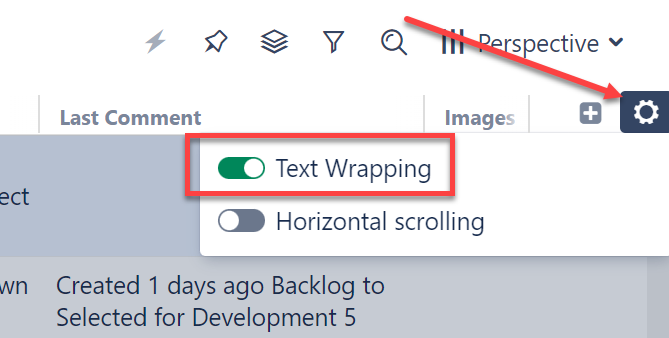Structure Description
The first time you open a structure, its description is shown at the top of the Structure panel, so you can quickly identify its purpose.

To close the description, or open it again, click the info button beside the structure's name
Moving, Adding and Removing Items from a Structure
Most actions within Structure can be done using the mouse, Structure Toolbar, or keyboard shortcuts.
Moving Items
To move an item, highlight it within your structure and:
-
Use the arrow keys in the Structure toolbar,
-
Use the drag bar to the left of the item to drag-and-drop it into a new position, or
-
Use the keyboard: hold the ctrl key and press up, down, left or right.

Moving an issue to the Right places it lower in the hierarchy. Moving it to the Left places it higher.
Adding Items
To add items (issues, folders, etc.) to a structure:
-
Use the Add menu in the Structure Toolbar,
-
Drag and drop the item from Jira or another structure (see Building a Structure Manually), or
-
Use Automation (see Building a Structure with Automation).
Deleting Items
To delete a single item from a structure, highlight the item and click the X (delete) button in the Structure Toolbar or use the delete key on your keyboard.
To delete multiple items, select each item by clicking the gray dot at the beginning of each item row (see Selecting Multiple Items). Once you have selected all the items you want to remove, click the delete key in the toolbar or use your keyboard.

Removing an issue from a structure does not delete the issue itself. It just removes it from the current structure.
Adding Columns
You can customize the Structure panel to include as many columns as you need. You can choose from a list of preset columns to display certain issue fields, attributes, formulas, and more. Or you can create your own custom columns.
To add a column to the Structure panel, click the + icon at the far-right of the column header.

To remove or customize a column, hover over its title in the column header and click the small triangle that appears.
Special Columns and Views
Structure also offers several very useful custom columns, including:
-
Progress - Progress can be calculated based on the Time Tracking, Status or a custom field such as Story Points. To review (or change) your Progress calculation settings, hover over the Progress title in the column header and click the small triangle. You can find all the details on how the progress is calculated in the full documentation.
-
Work Logged - The Work Logged column displays the work logged for every issue over a selected period.
-
Σ Totals - Structure offers a number of custom columns - including Totals columns. These special columns display the value for the selected field as a sum of the values of its children. This is especially useful for showing such things as Estimates, Time Logged, and Story Points.
-
Formulas - Formula columns allow you to calculate values based on issue fields and other attributes using custom formulas. Structure offers several built-in formulas, or you can create your own.
Once you've added all the columns you need, you can save them as a custom view. To do that, click the name of the currently selected view (in the right corner above the structure grid) and click the Save As link.
Text Wrapping
If you're working with fields that contain a lot of text or images, you can enable Text Wrapping to expand the height of each row to fit the content of those fields.

To enable or disable Text Wrapping, click the gear icon beside the Add Column button.

The Structure Board
In this tutorial, we have worked with Structure exclusively from the Structure Board. This is where you have the most freedom and capabilities, since your structures can work across any project you have permissions to view.
To open a structure in the Structure Board, select it from the Structure tab in the top menu.

If you don't see the structure you're looking for listed there, click Manage Structures at the bottom of the drop-down list and search for it on the Manage Structures page.
Structure in Other Locations
Structure is also available on:
-
Issue Pages
-
Project Pages
-
Agile Boards
-
Dashboard (as a gadget)
To learn more about where Structure can be found within Jira and the advantages and limitations of each location, see Jira Pages with Structure.
Next Step
Next let's see how easy it is to work with individual issues without leaving your structure.
